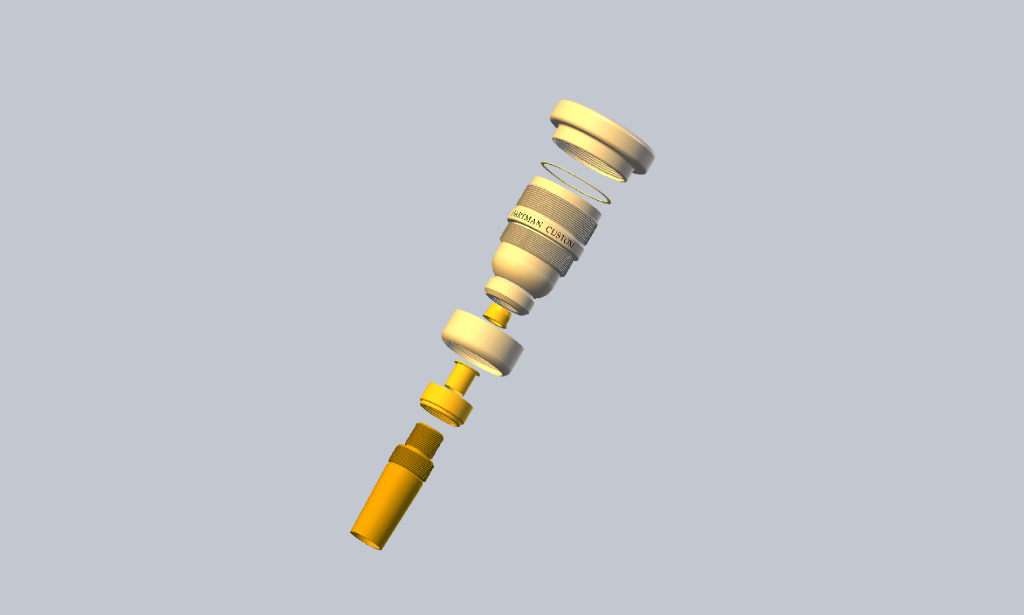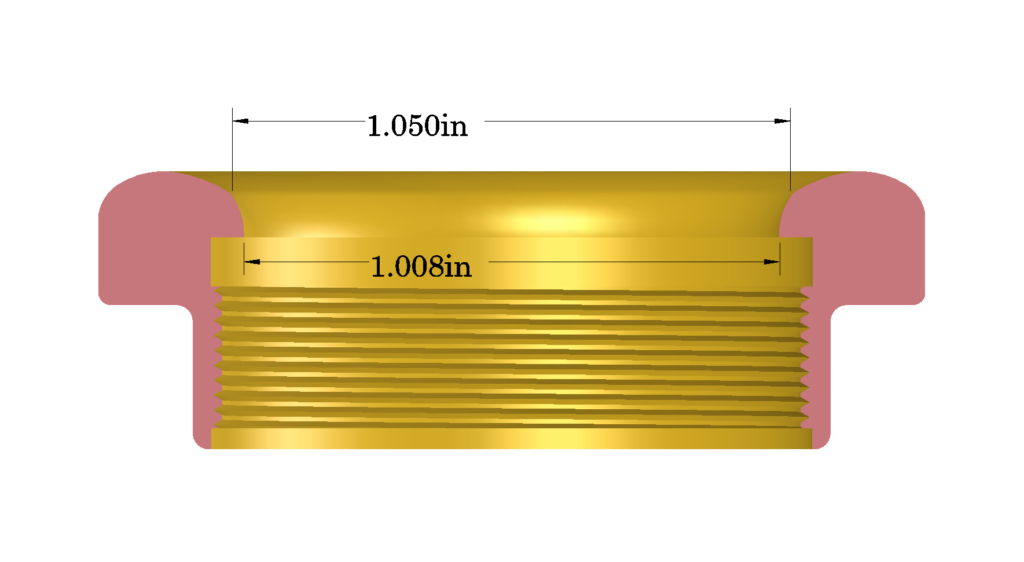Make sure to read: How does a Mouthpiece work?
People traditionally searched for a mouthpiece hoping to make something in their playing easier to achieve, such as low or high range, articulation, tone, stability… but, since traditional mouthpieces aren’t designed to be acoustically balanced or properly matched to an instrument, traditional mouthpieces usually bring negative affects along with the desired affects, undermining and masking the true characteristics of an instrument in the process.
Hartman Mouthpieces are designed to not only make it easier to play the horn, but they let the true characteristics of the instrument sound.

Tenerife Trombones!
Every horn has its comfort zone. Some are smooth, some like to play high, some like to bark, some are very directional and some are extremely resonant. Instruments have variations in bell thickness, metal alloy, bead wire, solder, leadpipes, etc., all of which make each instrument sound and play in a unique manner. These various characteristics interact to define its inherent resistance we could call its impedance. When you match a mouthpiece appropriately to a brass instrument’s acoustic impedance then you can slur up and down through the harmonic series with a minimum of effort. High and low range are more fluid and stable, plus your embouchure feels that the horn wants to do what you want asking rather than fighting you every note of the way! Everything is easy. The horn plays well and you can hear the real characteristics of the instrument!
As I came to understand the reality and nuances of this situation, it became apparent to me that I needed to find solutions to two primary questions:
1) Just what does a trombone actually need from a mouthpiece in order to play its best?
2) Given that all instruments differ – How can I make mouthpieces that can be varied – and controlled – and repeatable – so that I can satisfy every single instrument?
These were a daunting pair of inter-dependent problems to resolve but after years of R&D, I figured it out…
Modular Design – it became clear that the key to making the ideal mouthpiece was to make it modular. Unfortunately, given the extremely small tolerances necessary to properly balance a mouthpiece, I find that even the amazing precision of modern CNC manufacturing isn’t able to effectively replicate a mouthpiece as a one-piece mouthpiece! (Sad but true…I’ve tried) So a modular mouthpiece design is necessary to dependably replicate the characteristics one requires from a mouthpiece. I’ve found a method of doing this and will continue to keep looking for the simplest, most elegant way to make acoustically accurate mouthpieces.
So – How do you find the right mouthpiece?
Consideration #1:
#1) Leadpipe: A major component in the process of matching a mouthpiece to a trombone is mating the mouthpiece to the trombone leadpipe. The leadpipe serves to receive the mouthpiece and to gradually open up the bore of the combined instruments (mouthpiece/trombone) from the smallest diameter at the throat of the mouthpiece to the bore of the inner slide.
As you probably know, the leadpipe receiver is tapered to hold the mouthpiece and then after it reaches it’s narrowest point someplace beyond the end of the mouthpiece, it tapers larger until it reaches the bore of the inner slide. This narrowest point of the leadpipe, called a venturi, affects the flow of air through the trombone creating a potential bottleneck and turbulence that causes most mouthpieces to feel uncomfortable to play with that instrument. (This is the same issue that trumpet players refer to as the gap.) Also, the length of trombone leadpipes vary, which also affects the impedance of the composite instrument. A properly matched mouthpiece works with the horn’s leadpipe in order to accommodate these issues. Of course, this leadpipe issue pertains to any mouthpiece – either it works with the leadpipe or it doesn’t! It isn’t unique to my system of mouthpieces.
Given these physical properties of leadpipes, there are playing characteristics that you can identify when trying a mouthpiece. I address this acoustic phenomenon by grouping leadpipes into four categories or modes – A, B, C or D – and making mouthpieces that work with each of these modes. Interestingly, everything acoustic goes in cycles or phases as you change it’s dimensions, so – as you make a leadpipe longer or shorter, you go forwards or backwards through these modes…and if you continue to change the length, they start over again! So every leadpipe leadpipe fits somewhere within the spectrum of A,B,C,D. (Of course, this is a bit of a simplification of the acoustics, but it works!)
Any mouthpiece works best with only one of these modes. It’s an unfortunate acoustic situation but that’s the way trombones work! As a mouthpiece maker, you’ve got two choices – either ignore the problem or devise a systematic solution to the problem…i.e., making a version of each model to work with each of the modes of leadpipes.
Consideration #2
#2) Power: So, okay… your trombone leadpipe will play best with a mouthpiece from only one of these mode designations. As I mentioned earlier, each trombone has a certain power requirement too, its impedance (which the leadpipe also helps modulate). We need to supply your trombone the correct amount of power to make it respond optimally. In simple terms, the smaller the mouthpiece, the less power it outputs. I’ve organized my mouthpieces into groups that will help you decide which ones are most likely to work with your horn. The 300 series are for alto trombones and small tenor trombones. The 400 series are for small and medium bore tenors, 500 series fit medium bore tenors, 600 and 700 series are for symphonic tenors.
The closer a mouthpiece matches the needs of your instrument, the easier it is to play, so keep trying to zero in your mouthpieces! Trombone is a very difficult instrument to play – mouthpieces are an easy way to make them a bit friendlier, at least…
#3) Model Characteristics: I can bias a mouthpiece model towards the high range, the low range, loud, soft, lead playing, section playing, whatever you’d like to do with the horn. Depending upon what you are playing, you can choose a model that gives you an edge in that department!
This may seem confusing or over complicated – but once you start matching mouthpieces with your trombone, it becomes clear how this works. When properly matched to your instrument, my mouthpieces not only allow your trombone’s true characteristics to emerge – they will enable you to play with minimal effort and maximum affect. Then we can talk about tipping the equation in your favor even more by developing a your own model mouthpiece that has the characteristics that you aspire to achieve as a player.
I really do wish that it could be simpler – but I don’t make the laws of physics that dictate this…I just figured out how to use acoustics to our advantage. Considering that mouthpiece technology hasn’t changed much in the last 600 years, it is about time we move ahead, don’t you think?







